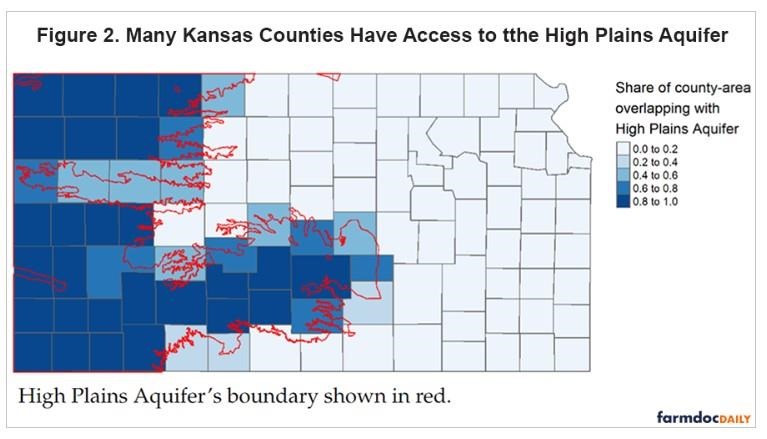On average, January is the coldest month of the year in Kansas, and December is the second coldest. Temperatures begin to warm in February; normal temperatures rise by about 7 degrees F from the first to the last day of the month. Given this, it might be surprising to learn that some of the all-time coldest temperatures at Kansas observing sites were not set in December or January, but in mid-February. It was just two years ago, on February 15 and 16, 2021, when a cold air outbreak brought the coldest temperatures in over three decades to parts of Kansas. But more than a century before, there were two days in particular that still stand out as being amongst the coldest days in Kansas weather history.
Record-setting cold in February 1899, 1905, and 2021
The year was 1899. William McKinley was in the Oval Office as the 25th president. There were only 45 US states; our southern neighbor, Oklahoma, was still 8 years away from admission to the Union. The winter of 1898-99 was the 5th coldest on record in Kansas. January was the mildest of the three winter months, but an extended cold spell arrived in late January, accompanied by multiple rounds of wintry precipitation that brought a few inches of snow to the state. An Arctic high pressure slid down the east side of the Rockies on February 11, and by the morning of the 12th was centered on the central US. This was referred to as a “violent norther” by Alfred Henry, the US Weather Bureau’s Chief of Division and Records and Meteorological Data, in the February 1899 issue of the Monthly Weather Review. Barometric pressures rose to over 31” (1050 mb) across Kansas (Figure. 1), levels rarely observed in the United States. When a very strong high parks itself over snow cover, temperatures plummet, and that’s exactly what happened (Table 1). Temperatures tumbled to -20°F or colder across the entire state, as cold as -34°F in Frankfort, in Marshall County. Manhattan fell to -32°F, which to this day is still the all-time record low. Other all-time record lows still standing from that day include -32°F at Garden City, -26°F at Dodge City and -22°F at Wichita. Kansas was not the only state in the deepest of deep freezes in 1899. The coldest temperature ever recorded in the state of Florida was recorded the next morning, on February 13, 1899: -2°F in Tallahassee. It snowed as far south as New Orleans, LA and Tampa, FL, as a blizzard swept up the east coast. February 1899 was the coldest February on record in Kansas, with an average monthly temperature of 19.0°F. The normal average temperature for the month of February (based on the 1991-2020 normals) in Kansas is 35.0°F.

Figure 1. Daily weather map from 8 AM on February 12, 1899. Source: Monthly Weather Review, American Meteorological Society.
Six years and one day later, Kansas was once again in the grips of an Arctic air mass on the morning of February 13, 1905. An area of high pressure took a similar path to the 1899 event, but was not nearly as strong, with highest pressures around 30.50” (1033 mb). There was deeper snow cover in place than in 1899, with many areas receiving between 6 to 18 inches of snow during the first part of February. Kansas’ coldest temperature on record was observed on this date: -40°F in Lebanon, in Smith County. All-time records set that morning that are still standing include -28°F at Newton, -24°F at Fort Scott, and -23°F at Independence. February 1905 was the second coldest February on record in Kansas; the average monthly temperature was 20.5°F. For comparison, February 2021 was only the 7th coldest February on record (averaging 24.0°F). There are a few sites that set their coldest all-time records during the 2021 event, but all of those locations have much shorter periods of records that don’t include 1899 and 1905.
Long-term weather records serve many purposes
If we compare the three February Arctic outbreaks from 1899, 1905 and 2021, which one was the coldest? The challenge with undertaking such a comparison is finding sites with continuous weather observations that span all three of those years. Fortunately, there are 18 sites in Kansas that have over 120 continuous years of weather records (Table 2). Averaging the minimum temperatures across all locations for each of the three events, 1899 has the coldest average (-26°F), compared to -22°F in 1905 and -18°F in 2021.
Another benefit to having long-term climate records is it helps us understand the rarity of such events. Temperatures of -20°F or colder in February have happened only a few other times outside of the three years spotlighted here. In Colby, there are seven other years (1933, 1936, 1951, 1960, 1981, 1982, and 1996) that featured at least one low of -20°F or colder in February. In Topeka, there are only three other occurrences (1971, 1979, and 1982). But in Manhattan, it hasn’t been -20°F in February since 1905.
The latest in the year that -20°F has been observed in Kansas is March 11, 1948. Eleven locations had lows of -20°F or colder that day, the coldest of which was -25°F in Healy, in Lane County. The last time it was -20°F in March was almost 45 years ago, when the mercury fell to -21°F in Holton on March 4, 1978.
Table 1. Minimum temperatures recorded at select Kansas locations on Feb. 12, 1899 and Feb. 13, 1905.

Table 2. Minimum temperatures at selected Kansas stations during cold air outbreaks in 1899, 1905, and 2021. The all-time record lows are also listed for each site.
 Source : ksu.edu
Source : ksu.edu